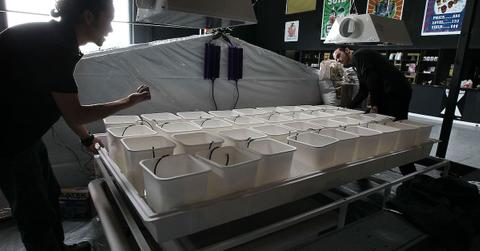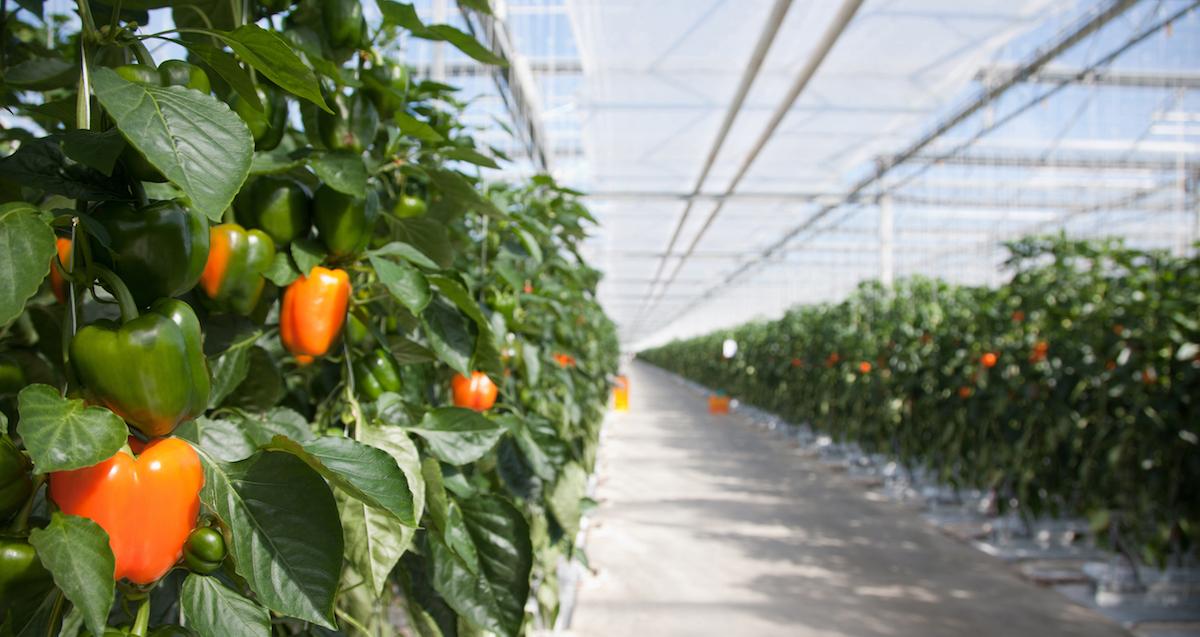The Beginner's Guide to Hydroponic Gardening
Published March 9 2021, 12:22 p.m. ET

Hydroponic gardening is a form of indoor gardening that uses no soil, but enables plants to grow in a solution of water and nutrients. Hydroponic systems are faster and more controllable than outdoor gardens, and they can be used year-round. Unfortunately, they also require more expertise and equipment to work properly. Thus, learning how to start hydroponic gardening might require a bit of extra knowledge and investment than many beginning gardeners are used to.

How to get started hydroponic gardening:
We should start by saying, there are many ways to build a working hydroponic garden in your home. You could opt for an out-of-the-box expensive setup, many of which are available at hydroponic gardening retailers, but if you’re just starting out, a DIY solution might work best. These DIY setups can be large, wooden grow tables covered in polycarbonate plastic outfitted with water pumps and set beneath large, warming lights, but they don’t have to be.
Many effective DIY setups can be achieved using repurposed storage containers, PVC pipes, or pool noodles. It’s ultimately up to you. In this introduction, we will be demonstrating how to start seeds in a hydroponic setup that requires only a few materials, a light, and a small platform.
The following instructions are paraphrased from a video by MIgardner, and these are the materials you'll need:
Soil-less growing medium
Growing mediums are just the material that plants take root and grow in. For traditional gardening, that medium is usually soil. This is not so for hydroponic gardening. The soil-less medium used by MIgardener is something called rock wool cubes, which are rocks that have been melted down and spun into something like fiberglass insulation.
This material feels like wool, is extremely absorbent, and usually comes in packs of 50. Note that you don’t want to use potting mix, soil, compost, or worm castings in hydroponic gardening. Organic might be a great thing for outdoor gardening, but it's no good for hydroponic gardening because organic compounds break down over time. They also invite bacteria which can disrupt the growing process.
Growing plants indoors means that you don’t have a food chain or predators to keep things like fungi and bacteria in check, and the inherent moisture in hydroponic gardening contributes to the unchecked growth of those bacterial, fungal elements.
Seed tray
This can be any solid plastic tray that is big enough to hold the seeds and growing medium. Look for trays that can hold water without leaking. This will ensure that you have higher humidity, which is better for hydroponic growth.
Humidity dome
A humidity dome is essentially a plastic cover that you place over the planting tray in order to create a humid environment for seeds and seedlings.
Heat mat
Plastic or rubber heat mats are used to keep your plants at a steady 75 degrees Fahrenheit as they begin the growing process. Most are electric and some might come equipped with temperature gauges.
Seeds
Herbs and leafy greens like arugula, basil, thyme, and even lettuce work best for hydroponic gardening because they are smaller and mature quickly. For fruits and vegetables, try to stick with ones that don’t grow to enormous sizes. Squash, zucchini, pumpkins, and cucumbers might all be off the table as their vines can spread out quite far.
Lighting
According to Homegrown Hydroponics, you can use a number of different types of bulbs to create the necessary artificial light to grow a hydroponic garden. These include fluorescents, T5 fluorescents, compact flourescents, or induction fluorescents. You could also use high-intensity discharge lights (MH or HPS) or light-emitting diodes. Either way, plan on having about 40 watts per square foot of gardening space.
Listed below are the first easy steps towards starting seeds in a hydroponic garden.
Step 1: Set the growing medium.
Start by taking half of the growing medium and place it flat side up in the very center of the tray. Wet both sides of the growing medium down (rock wool cubes) lightly but be careful not to oversaturate them. If the seeds are too wet, they could develop mold right from the start. Take special care to moisten the pre-dug seed holes, as these are where you will be inserting the seeds.
You’ll want to use water that has a neutral pH of 7 only. Purified tap water should be fine for this and it can even be chlorinated. There is no need for distilled water. Also, you want to avoid using well water or any type of water with excess salt or lime.
Step 2: Plant the seeds.
You’ll want to plant three to five seeds, one per hole. You should see seedlings start to sprout in around two days, but some seeds can take up to seven.
Step 3: Plug in the heat mat and lights.
All you need to do next is place your tray in whatever hydroponic rack you already have set up and plug in the heat mat and make sure the lights are already on a schedule. Don’t turn the lights on the seeds until they have sprouted. Seeds sprout better in the darkness and only need that extra light once they’ve used up all the energy they once possessed while in seed form.
According to The Spruce, hydroponic plants need at least 14 to 16 hours of bright artificial light per day. This must be followed by 10 to 12 hours of darkness, which allows the plants time to rest and metabolize their energy.
Where can I find hydroponic gardening tools and components?
All of the items listed above can be found at specialty hydroponic retailers or online stores like HTG Supply and ZenHydro, as well as most chain hardware gardening stores like Lowe's and Home Depot.
These instructions for starting seeds are just the beginning. Hydroponic gardening can be a rewarding but time-intensive process. If you are having success growing seeds in this way and are enjoying the experience, feel free to look into ways to improve your setup. Like most DIY projects, these things are easier to accomplish if done in stages and with a patient outlook. Good luck and happy growing!